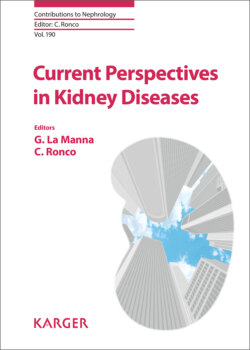Читать книгу Current Perspectives in Kidney Diseases - Группа авторов - Страница 15
На сайте Литреса книга снята с продажи.
Extracorporeal Therapies in Patients with Sepsis-Associated AKI
ОглавлениеSepsis and AKI synergistically increase the mortality of ICU patients, and the short- and long-term mortality rates for S-AKI are still unacceptably high (about 50–70%) [29, 30]. Patients with S-AKI have increased mortality compared to non-septic AKI (across all stages of AKI) [31] and to patients with sepsis without AKI. Unfortunately, to date no effective therapy (excluding antimicrobial agents) has been shown to alter the outcome of S-AKI and its management is almost exclusively based on supportive therapies not always able to interfere with the mechanisms of tissue injury or the loss of immune homeostasis.
More than 2 decades ago, it was observed that RRT can remove inflammatory mediators from the plasma of septic patients and improve the pulmonary function [32]. Subsequently, clinical improvements, enhanced cytokine removal and a survival benefit with hemofiltration in septic patients have been reported [33]. Different studies showed that, excluding the absolute indications for RRT (fluid overload, metabolic acidosis, uremia, hyperkalemia and drug intoxication), the decision to initiate dialysis is mainly based on the clinical judgment. Indeed, guidelines regarding timing, indication, modality and dose of RRT for S-AKI patients are still lacking. In this part of the review, we will evaluate the clinical and biological effects of different extracorporeal treatments for S-AKI, focusing on timing, dose and modality of RRT. We will consider new therapeutic strategies based on extracorporeal blood purification techniques that may play a role in improving outcomes and in decreasing progression toward CKD in the near future.
